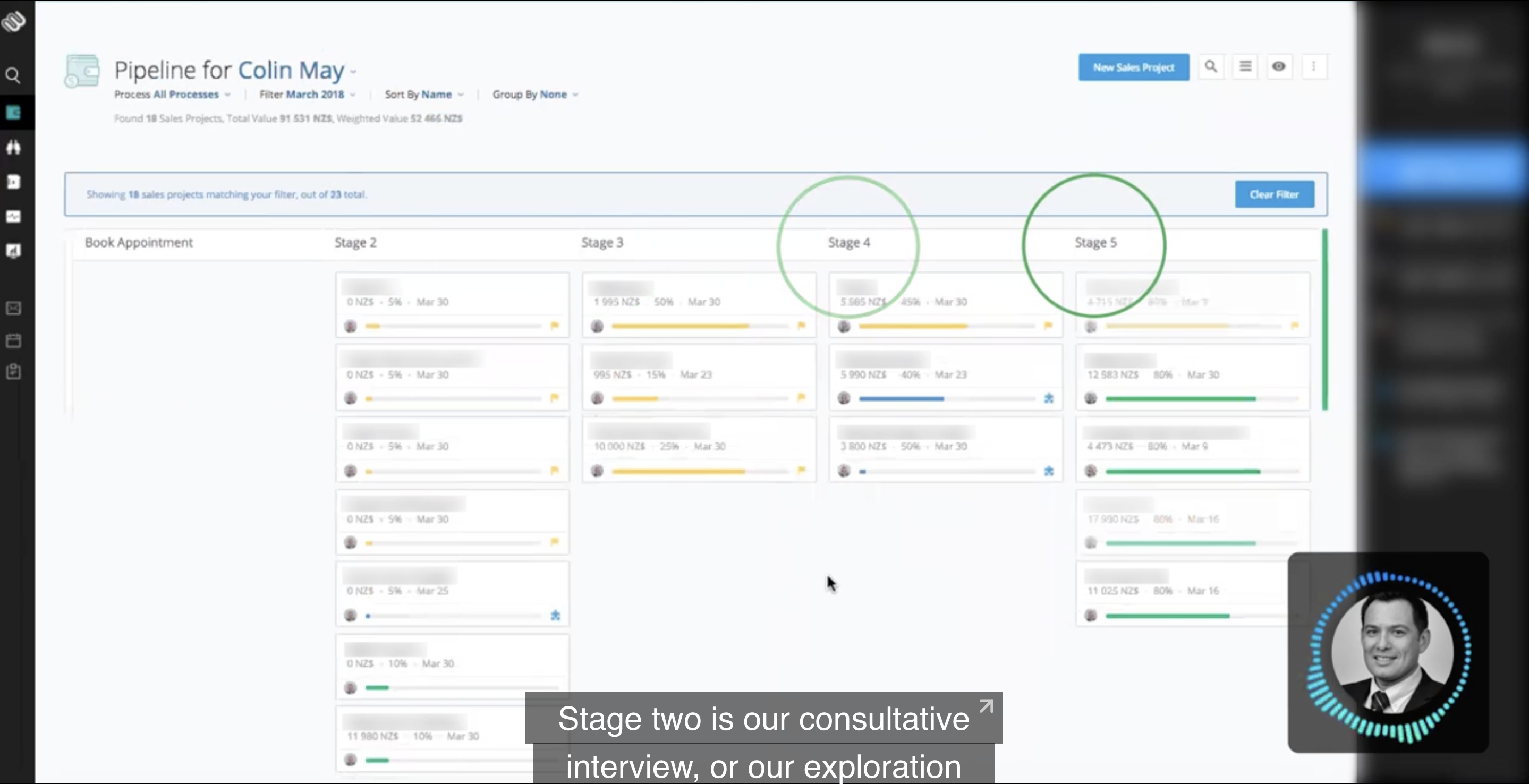
The Bloated Pipeline
Today’s case covers a common issue with a new sales hire’s ability to close deals consistently in a complex B2B sales environment. Pressed for time, new reps often prioritize the wrong activities, leading to bloated pipelines with poor close rates.
Luckily we can spot this common case using pipeline data: too many deals stuck in late stages, with a low close rate. And the corrective action yields substantial results.
Follow these three steps to identify and correct the “Roller Coaster Case” before your new hire burns out or gets cut loose for the wrong reasons.
Symptom: Bloated Pipeline
In this real salesperson example, we see an apparently strong sales pipeline, with excessive bloating in the end stages. Additionally, against a company benchmark of 60-64% close rate, this salesperson is demonstrating only 37%.
This is what we call a bloated pipeline result. It can happen if the salesperson lacks good consultative skills, but in this case we know the rep is doing a good job on qualifying and identifying pain. So we have to figure out what’s causing this end-stage failure.
Diagnosis: Wrong Activity Focus

Missing skills?
In this case, we know that the salesperson has great selling skills, so failure to close has nothing to do with that.
Work ethic?
We also know this particular salesperson works hard, so that’s not the problem either.
Priorities?
To get to the bottom of this one, we have to bring the conversation to the salesperson.
Found it!
In coaching conversation, we find out that in order to make time for plentiful prospecting, the salesperson has been saving time by email proposals to prospects instead of delivering them in person. This one mistake has been causing deals to slow down and stall out.
Prescription: In Person Proposals
Now that we understand the problem, we can coach the salesperson and help them understand the importance of in-person proposals.
- In the time between establishing the solution and delivering the proposal, prospects have an opportunity to “cool down” and forget the pain that they are trying to solve.
- In-person proposals give the salesperson an opportunity to renew the prospect’s sense of their own pain and the impact of that pain, thus renewing urgency.
- Using email to deliver proposals causes the salesperson to lose control of the timeline, leaving the process instead in the hands of the prospect.
- An in-person proposal gives the prospect a chance to answer questions and for the salesperson to continue their consultative relationship.
Once the salesperson understands the importance of in-person proposals, they can prioritize their time better to ensure this happens. In this case, the salesperson immediately understood the value and changed the way they delivered proposals. Within six weeks, their bloated pipeline became a healthy pipeline, and their close rate went from 37% to 61%.
PS: If you are using a traditional CRM without sales enablement and coaching capabilities, check out our SalesStar Edition of Membrain. It comes with decades of learning packaged into one easy-to-use system that will help you increase sales effectiveness.

By Paul O'Donohue
The CEO of SalesStar, New Zealand's leading sales development company. Are you looking for Paul? You'll find him at the battle front. He loves getting out to see new prospects learn about their sales challenges and helping them fix their problems and win new business. He works with helping CEO's who are frustrated with their sales results. Who know they can be doing better, but just don't know how!
Find out more about Paul O'Donohue on LinkedIn







